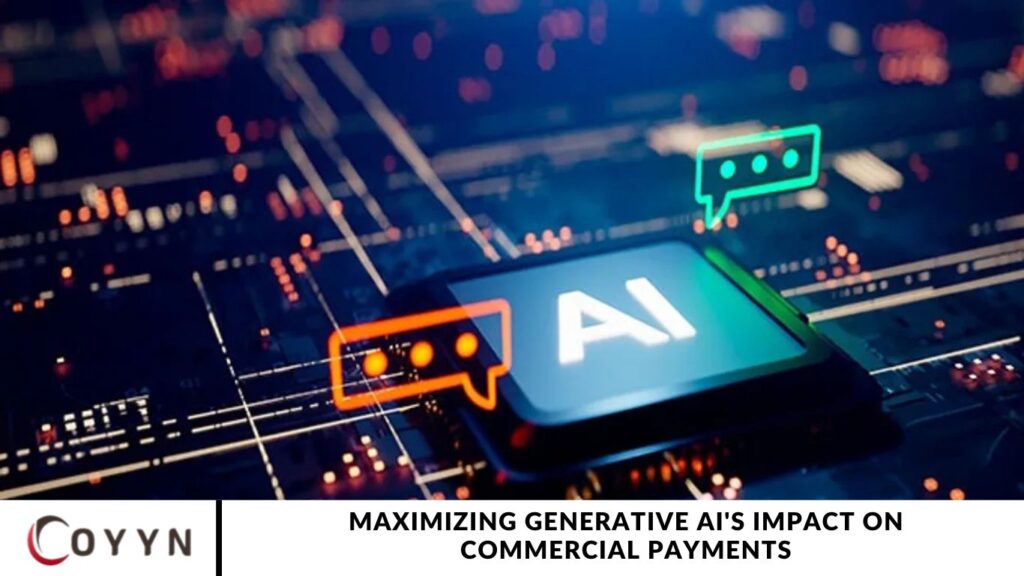Artificial intelligence (AI) has been reshaping the payments industry for years, but recent advances are accelerating that transformation. According to Accenture’s Payments Technology Reinvention Study, leading banks are now investing heavily in AI and generative AI, achieving automation of up to 40% of manual processes within their payments operations. Breakthroughs in machine learning, image generation, and speech recognition are driving innovation across a wide range of payment use cases (see Figure 1).
The emergence of generative AI marks a significant turning point—an inflection point where the technology begins to exceed human capabilities in certain areas. This shift is enabling financial institutions to streamline operations, enhance decision-making, and redefine how teams work and interact. Accenture’s research highlights the top three applications of generative AI in payments today: fraud detection, payment data security, and real-time conversational interfaces through authentic AI-driven chat experiences.
The commercial payments industry is ripe for disruption.
Incumbent payment providers are under increasing pressure as digital-first competitors, client frustration with traditional processes, and reliance on outdated legacy systems continue to challenge their ability to adapt to a rapidly evolving market. According to our commercial payments research, a growing number of corporate clients express dissatisfaction with core banking services—particularly in areas such as trade finance, liquidity management, and accounts receivable/payable (AR/AP). This dissatisfaction stems from ineffective fraud prevention tools, complex user experiences, and the lack of flexible, value-added services. Clients also struggle with the integration of modern payment methods, further widening the service gap.
Today, generative AI offers a breakthrough opportunity to overcome these long-standing pain points. By enabling hyper-personalized experiences, generative AI can help banks redesign complex payment workflows, reduce friction, and boost overall efficiency. From automated document processing to advanced fraud detection, the technology is being applied across a wide range of use cases in commercial payments (see Figure 2).
High-Impact Use Cases of Generative AI in Commercial Payments
Client Servicing
- AI-powered virtual assistants improve customer support
- Personalized insights based on transaction history
- Centralized knowledge management to streamline inquiry handling
Sales and Marketing
- Intelligent customer segmentation for targeted outreach
- AI-driven cross-sell opportunities (e.g., tailored wealth management services)
- Personalized marketing content to increase engagement
Treasury and Finance
- Automated cashflow and payment process management
- Predictive analytics for more accurate financial forecasting
Fraud Prevention
- Advanced fraud detection in cross-border payments
- Use of synthetic data to simulate and train for evolving fraud scenarios
Operations
- Automation of repetitive tasks like data entry and reporting
- Streamlined support for payment investigations and monitoring
Regulatory and Compliance
- AI-enhanced interpretation of regulatory frameworks and documentation
- Real-time tracking of ISO messaging and payment scheme compliance
Product Development and Technology
- AI-assisted code generation accelerates the modernization of legacy payment platforms
- More brilliant risk scoring for transactions and system upgrades
The gap between need and readiness
Accenture’s research reveals that 95% of executives believe that making technology more human-centric will significantly expand opportunities across every industry. Yet, despite this broad consensus, a critical gap remains between the recognized importance of AI adoption and the actual organizational readiness to implement it at scale.
A recent report—A New Legacy of Payments Growth: How Banks Can Reinvent Payments with a Strong Digital Core—highlights this disconnect. It found that only 20% of banks have the foundational digital infrastructure needed to swiftly capitalize on emerging payment innovations. To unlock the full potential of generative AI in commercial payments, institutions must invest in a seamless AI and data backbone built on a secure, scalable technical foundation.
Our analysis shows that 75% of market-leading banks benefit from a mature digital core. These organizations are better positioned to launch new payment capabilities quickly, iterate based on client feedback, and respond to market shifts with agility.
Ethical and Operational Considerations in AI-Driven Payments
While the potential of generative AI in banking is substantial, its adoption introduces a range of ethical, regulatory, and workforce challenges that organizations must proactively address:
Bias and Fairness in AI Models
Generative AI systems are only as far as the data they’re trained on. If not properly managed, these systems can perpetuate existing biases in credit scoring, fraud detection, or dynamic pricing. Left unchecked, these biases could result in discriminatory outcomes across payment use cases, especially for underrepresented or marginalized demographics.
Evolving Regulatory Pressures
Regulatory scrutiny around AI is intensifying. For instance, the EU’s Artificial Intelligence Act, currently under negotiation, proposes a risk-based framework that will directly impact AI applications in finance, credit, and payments. It emphasizes the need for transparent algorithms, data bias mitigation, and greater accountability in high-risk AI systems such as credit decisions and lending.
Workforce Transformation and Talent Strategy
The rise of generative AI will profoundly reshape the future of work in payments. Manual roles—particularly in areas like trade finance and data entry—may decline as automation increases. At the same time, there will be surging demand for professionals skilled in AI governance, system integration, and data analysis. To remain competitive, banks must prioritize reskilling and upskilling initiatives that prepare their workforce for this next wave of innovation.

Where to begin?
While generative AI offers advanced capabilities in automating tasks and enhancing decision-making, it is not inherently creative. True innovation still depends on human insight and imagination. By combining AI’s computational power with human creativity, financial institutions can unlock opportunities that would otherwise remain out of reach—especially in the complex world of commercial payments.
To fully capitalize on this transformative technology, banks and payment providers must take deliberate steps to align strategy, talent, and infrastructure.
3 Key Steps to Unlocking Generative AI in Payments
Engage the Right Ecosystem Partners
Collaborate with leading banks, technology vendors, and consulting firms to access cutting-edge insights and proven best practices for responsible AI implementation.
Reimagine and Reinvent Business Processes
Don’t just add generative AI on top of existing workflows. Instead, embed AI deeply into core processes, rethink how tasks are executed, and drive behavioral change across the organization to maximize its impact.
Build a Cross-Functional Generative AI Team
Form a dedicated team that brings together your top creative thinkers from product, compliance, operations, marketing, and IT. A multidisciplinary approach ensures that AI is implemented strategically, responsibly, and with innovation at its core.
A Transformative Moment for Commercial Payments
Generative AI is more than a trend—it’s a catalyst for reinvention. It enables banks to streamline legacy operations, enhance fraud prevention, and deliver hyper-personalized client experiences. However, its value can only be fully unlocked if organizations address key challenges:
- Digital readiness and infrastructure gaps
- Evolving regulatory frameworks and compliance requirements
- The need to combine AI with human creativity for responsible innovation
By embracing these imperatives, organizations can not only overcome traditional limitations in the payments industry but also redefine what’s possible.
Frequently Asked Questions
What is generative AI, and how does it apply to commercial payments?
Generative AI refers to machine learning models that can produce new content or data based on training inputs. In commercial payments, it’s used to enhance fraud detection, automate documentation, personalize client experiences, and streamline operations.
How does generative AI improve fraud prevention in payments?
Generative AI can detect fraud patterns with greater accuracy by analyzing large volumes of transactional data in real-time. It also generates synthetic fraud scenarios to train better detection models.
What are the benefits of using generative AI in treasury and finance operations?
In treasury and finance, generative AI enhances cash flow forecasting, automates payment reconciliations, and streamlines financial reporting—resulting in faster, more informed decision-making.
Can generative AI personalize customer experiences in B2B payments?
Yes. Generative AI analyzes transaction histories and behavioral patterns to deliver personalized recommendations, alerts, and service offerings, improving B2B client engagement and satisfaction.
What infrastructure is needed to implement generative AI in payments?
Successful implementation requires a strong digital core, seamless data integration, secure APIs, scalable cloud infrastructure, and robust governance frameworks.
What are the regulatory concerns related to generative AI in payments?
Key concerns include bias in decision-making, data privacy, and transparency. Upcoming regulations—such as the EU’s Artificial Intelligence Act—will require high-risk systems in payments to meet strict compliance standards.
How can banks ensure ethical AI use in payments?
Ethical AI use starts with diverse, bias-mitigated training data, explainable AI models, continuous monitoring, and adherence to responsible AI governance principles.
Conclusion
Generative AI is more than just a technological advancement—it’s a strategic enabler for transformation across the commercial payments landscape. From enhancing fraud prevention and automating manual processes to delivering personalized client interactions, its potential is vast and still unfolding.
However, real impact requires more than technology alone. To fully maximize generative AI’s value, financial institutions must align on three critical fronts: a secure and scalable digital core, ethical and compliant AI practices, and a culture that fuses human creativity with machine intelligence.


